Your Definitive Guide to Lead Generation
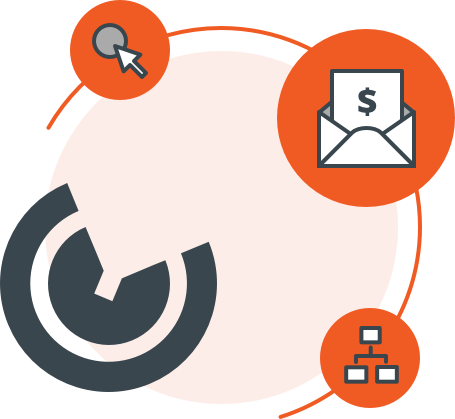
Table of Contents
What is Lead Generation?
Lead generation is the action or process of identifying and cultivating potential customers for a business's products or services.
Why Do You Need Lead Generation?
To put it simply - the modern buying process has radically changed. In the old days, the concept of “lead generation” meant finding the names of potential buyers and passing them to sales. Salespeople could then guide prospects through the buyer’s journey before closing the sale.
The salespeople were involved early on in the buyer’s research because of one thing the salesperson had that the buyer did not – information. The sales person could use that as leverage with the buyer to influence the whole sales process.
Today, the salesperson’s information leverage is gone. Buyers can do their own research online and can find a variety of educational resources to learn about a product or service before ever having to even speak to a salesperson. In fact, buyers are now at least 57% through their purchase research before they first contact the seller (Corporate Executive Board).
This shift from information scarcity to information abundance leaves you as a seller with a choice: seek out prospects who are fully-informed and ready to negotiate price, or generate leads from buyers who are researching a purchase, and build a relationship with them before they make their purchase decision.
The resources on this page are here to help you do the latter and adapt to the modern age of lead generation.
Online Lead Generation
The focus of lead generation has shifted from finding customers to being found by customers. And the majority of this now takes place online. But what happens once a person finds you online (i.e., lands on your website)? Considering the average website has a sales conversion of 1% to 2%, more than 95% of visitors wont buy anything (especially on their first visit). But instead of losing them forever, you want to capture them as leads who you can sell to in the future.
That’s exactly what online lead generation is. It’s a way of warming up potential customers to your business and getting them on the path to eventually buying.
The mechanics behind generating leads online include:
- Call-to-action - a button, text or image that encourages visitors to navigate to a...
- Landing page - a web page that's purpose is to capture leads through a...
- Form - a series of fields that collect information in exchange for an...
- Offer - content or something that has enough value to merit providing personal information in exchange for it.
This section is full of resources to help you develop a online lead generating machine for your company.
Diagram: Online Lead Generation Ecosystem
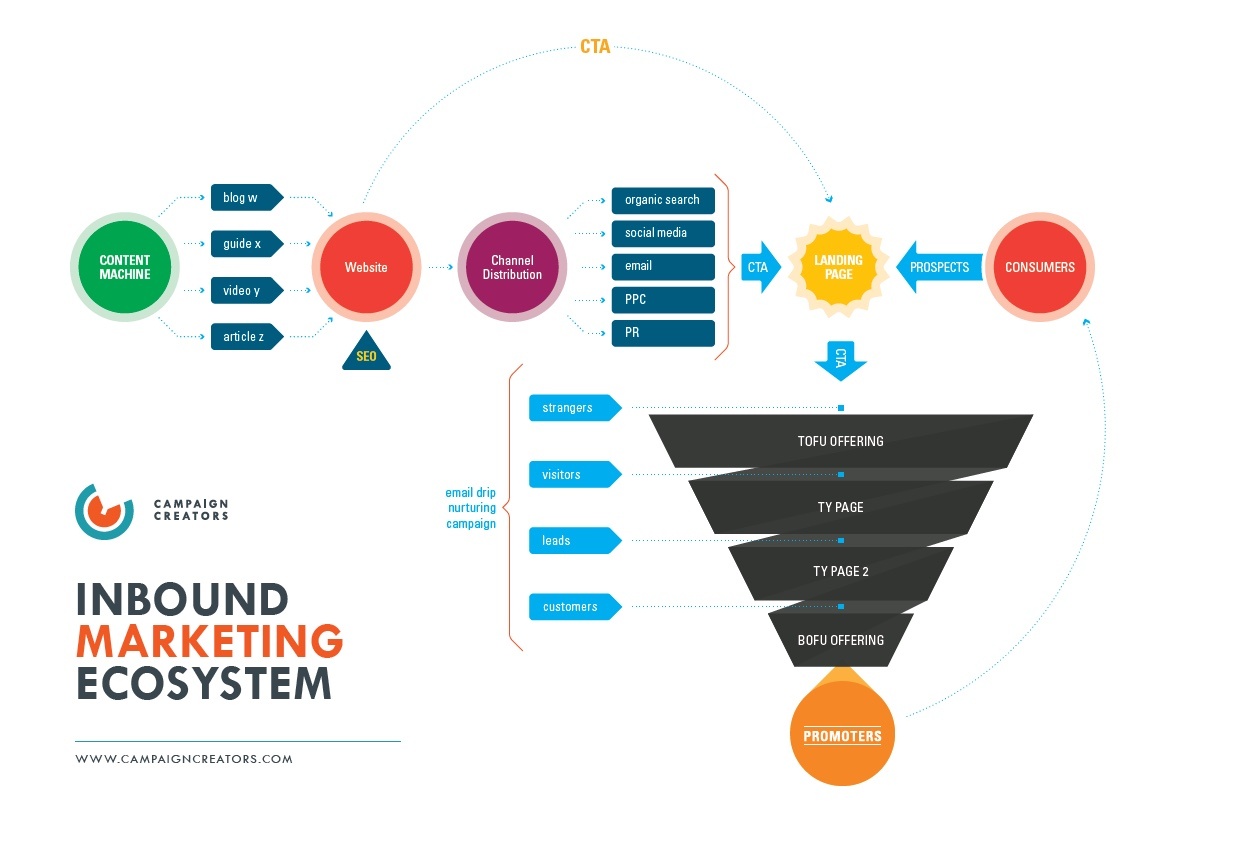
Definitions
Call-to-Action: A text link, button, image, or some type of web link that encourages a website visitor to visit a landing page and become a lead.
Offer: The content or something of value that’s being “offered” on a landing page.
Conversion Form: Also known as lead capture forms, these are typically found on a Landing Page, and collect details about visitors, usually in exchange for a content offer.
Landing page: A landing page is a website page containing a form that is used for lead generation. This page revolves around a marketing offer, such as an ebook or a webinar, and serves to capture visitor information in exchange for the valuable offer.
Lead: A person who has indicated interest in your company's product or service in some way, shape, or form.
Marketing Qualified Lead (MQL): A lead that shows interest through interaction via an email signup or contact form. MQL’s usually need to be researched further to see if they are a real prospect and converted into a Sales Qualified Lead (SQL).

How To Incorporate Lead Generation Into Your ECommerce Marketing Strategy
As an eCommerce company, it’s common to only focus on driving traffic to your site, whether that’s with PPC ads, social media, or other available channels. But as far as your business bottom line, how many of those visitors end up making a purchase?
Read blog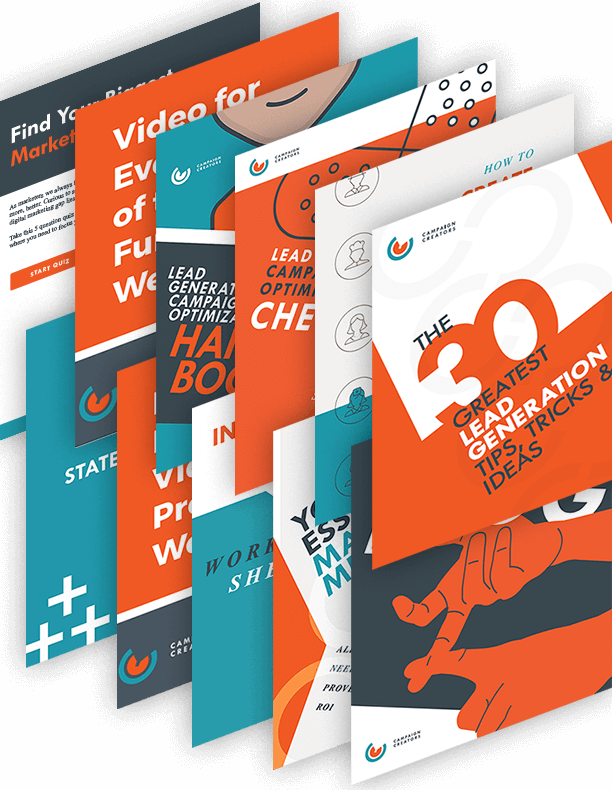
How to Create a Lead Magnet | 4 Successful Examples
The brutal truth is that we simply don’t have control over the vast majority of people who visit our website and decide not to become a customer. However, we do have control over the quality of our content and how we approach getting lead’s information!
Read blog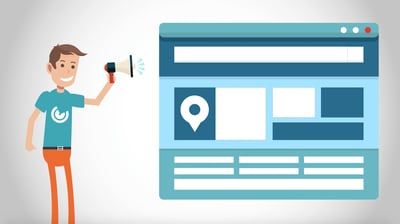
How to Optimize Your Landing Pages for Maximum Conversions
In the world of inbound marketing, lead generation is top of mind for plenty of digital marketers. Marketing specialists work tirelessly to create e-books, white pages, webinars, and infographics that provide tried and true solutions to their target audience's pain points.
Read blog
10 Best Lead Generation Strategies for Real Estate
With the breakneck pace at which technology is progressing in the field of real estate (as in many others), it’s no surprise that agents and brokers may feel overwhelmed with deciding what to incorporate into their marketing strategy.
Read blog
Introduction to Lead Generation
There are tons of ways to generate new leads, but only a few of those ways are actually effective and generating the right type of leads.
Get the guide
30 Lead Generation Tips & Tricks
Do you want to build a successful lead generation campaign? If your answer is yes, then you will need an irresistible offer, motivating calls-to-action, landing pages that convert, optimized forms and a multi-channel promotion strategy.
Get the guideInbound Leads
Inbound is the reverse of outbound. Instead of reaching out to prospects, you lay out a trail of information and incentives (content) that attracts prospects towards your company. Unlike outbound lead generation, it’s the prospect who decides when and how they will reach you.
Because inbound leads start the relationship (versus the business starting the relationship with a cold call), it is easier and more natural for them to want to buy from you somewhere down the line.
How are inbound leads different that outbound leads?
- Inbound leads know more about your company because they've already downloaded your content, read your blog and have a taste of who your company is and how you can solve their problems. With outbound leads, you have to assume that the lead knows little to nothing about your company at the first touchpoint, which means your sales team has to spend a significant amount of time educating them.
- Salespeople prefer inbound leads because they have to do a lot less legwork because your inbound marketing campaigns have already worked towards convincing them that your company is worthy and able to help them.
- Inbound leads are less expensive than outbound leads, who cost an average of 61% more to generate.
The resources in this section are here to help you generate more leads for your business using the inbound methodology.
Diagram
Definitions
Buyer’s Journey: This is the three stage purchasing journey your buyers progress through before converting, consisting of:
- Awareness Stage: where buyers are aware of a pain point, but do not know how to solve it.
- Consideration Stage: where buyers have defined their challenge and are considering ways to solve it.
- The Decision Stage: where buyers know the solution they need and are looking to make a purchase decision.
Buyer persona: A semi-fictional representation of your ideal customer based on market research and real data about your existing customers.
Inbound methodology: This methodology takes into account both the goals of the buyer and the company and is a map for aligning those goals. The inbound methodology completes this by helping marketers know which kinds of content are right for buyers in each stage of the sales funnel.
Marketing funnel: A visualization of a company’s process of generating, qualifying, and closing leads into customers. typically consisting of 3 stages:
- TOFU: The Top-of-Funnel stage. Prospects in this beginning stage are typically trying to solve a problem, and thus want to be educated and acquire relevant information to determine the best solution.
- MOFU: The Middle-of-Funnel stage. Offers in this stage are potentially the most important in the funnel, as they distinguish “good fit” leads and begin to pull them in. Prospects have moved on to determining the best solution for their problem, so you can now focus on why your company’s products/services are their best choice.
- BOFU: The Bottom-of-Funnel is the stage of the buying process leads reach when they’re just about to close as new customers. They’ve identified a problem, have shopped around for possible solutions, and are very close to buying.
Outbound marketing: The process of pushing your message out to customers through general advertising and other paid programs.
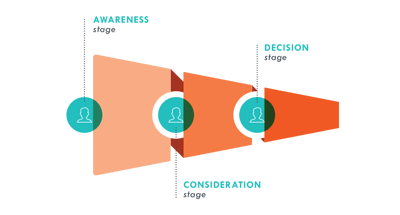
The Lowdown on Inbound Marketing
Over the years society has evolved quite a bit. With that change, the way people structure their lives has changed as well. In today’s world people are constantly taking on many different responsibilities.
Read blog
How to Develop and Successfully Use Buyer Personas
We’ve realized that there are so many mistakes to avoid when trying to make and use buyer personas and even more things you need while going through this whole process.
Read blog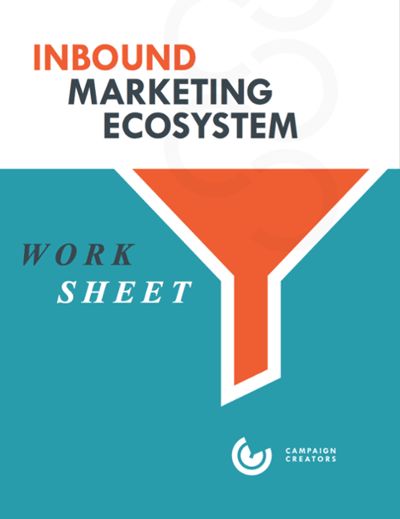
Inbound Marketing Ecosystem Worksheet
Are you ready to build a successful inbound marketing machine but not sure where to start? We get it - there are a lot of moving parts!
Get the worksheet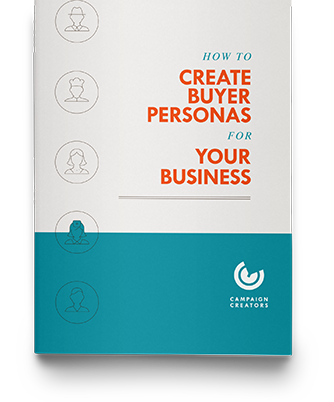
How to create Buyer Personas
You won't be able to position what you're selling to meet customers' (and potential customers') needs without knowing who they are, their goals, and the challenges they face.
Get the workbookContent Marketing for Lead Generation
Today’s buyers demand creative, relevant and compelling content from the brands that are important to them. Content marketing fills this need by creating impactful content and optimizing its distribution across a wide range of channels and customer touch points. Which is why content marketing is no longer a nice-to-have activity relegated to the marketing department. In the modern era, content is a requirement playing an integral role across the organization.
The Benefits of Content Marketing
Here are just a few of the benefits you can achieve by incorporating content marketing into your marketing and lead generation strategy:
- Builds online presence. In the digital world, content is what drives visitors to your site and turns them into leads when they arrive.
- Establishes thought leadership. Content marketing is an ideal vehicle for growing your organization’s thought leadership agenda and positioning your brand as an industry leader.
- Attracts followers. Creating relevant and compelling content that is ripe for social sharing and brand advocacy helps your company gain a foothold in social channels.
- Advances sales cycles. By aligning content with buyers’ needs at each step of their journey, content marketing makes it easier for them to navigate the road from prospect to lead to satisfied customer.
Creating a Content Marketing Strategy for Lead Generation
In order to engage prospects and customers in today’s buyer landscape, your content must educate, inspire, and beg to be shared. It should help leads overcome challenges and achieve their aspirations. If you are able to do that, leads will flock to you, and you’ll gain their trust.
The key steps to creating an effective content marketing strategy for lead generation are:
- Knowing your audience through market research and buyer persona development.
- Mapping your customer journey.
- Create high quality content based on your buyer personas and their customer journey.
- Designing a high converting landing page to capture your leads.
- Promoting and distributing your content across a wide-range of channels.
The resources in this section are here to help you execute on Step 3: Creating high quality content!
Diagram: Content Across the Buyer's Journey
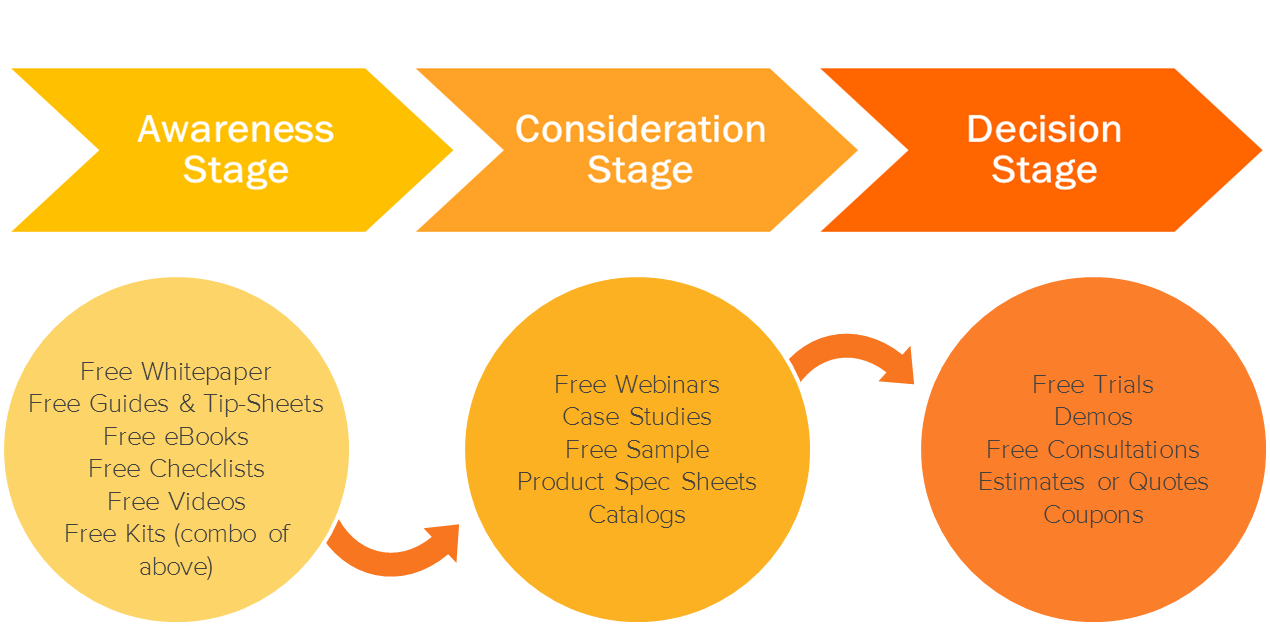
Definitions
Backlinks: Links from other domains that link back to your page, meaning it is outside domains that are linking back to your domain. The more backlinks you have from external links the stronger the relevance and diversity of your domains banklink profile will be.
Blogging: Publishing content on the web. A “blog” is where the content is published. The word “blog” is a shortened version of “weblog,” which is a mashup of the words “web” and “log.” In the early days of blogging (late 1990s), blogs were diary-like. In the 2000s, blogging matured into a dominate way to publish online, with most businesses sporting a blog.
Content: Helpful, educational persona-challenge focussed content drives Inbound marketing campaigns. Your content is everything from the copy on your site to blogs, eBooks, podcasts, images, social messages and more.
Content marketing: The process of creating and sharing valuable free content to attract and convert prospects into customers, and customers into repeat buyers. The type of content you share is closely related to what you sell. In other words, you educate people so that they know, like, and trust you enough to do business with you.
Content Pillar: An in-depth piece of content. This could be anything from an eBook to a video or a report that can be broken into smaller pieces like a blog post or emails.
Copywriting: The act of writing a text for advertising purposes or other forms of marketing. It is used to increase brand awareness and convince people to take a particular action.
Curation: The act of collecting, organizing, and sharing content. This can be done via a blog, social media, or an email newsletter.
Ebook: A digital book designed to be read on a device like an ereader, smartphone, laptop, or tablet. It may contain text, images, and links. Ebooks can be downloaded and/or purchased.
Editorial Calendar: A publishing schedule that helps content marketers and organizations plan and coordinate what content will be published (i.e., blog posts, podcasts, email newsletters, and social media updates), and when.
Infographic: a visual image such as a chart or diagram used to represent information or data.
Keyword: A word or words that describe the content on your page. It is used as a summary of your entire page. It helps search engines find your page when someone puts in a search for a topic related to your page.
SEO (Search engine optimization): Strategies and tactics used to make your page more attractive to search engines and help increase the number of visitors to your page by ranking higher on different search result pages like Google, Bing and Yahoo.

3 Tips For Getting Your Content Noticed Online
You probably have heard about the importance of inbound marketing. You may have even began to create content that not only will delight your current customers but also will inspire prospective customers to become leads online.
Read blog
3 Things You Need to Know for Effective Content Marketing
You’ve heard that content marketing is the way of the future; you’ve done your research, and you’re on board. You start blogging, posting to different social media outlets on the regular, and emailing like crazy.
Read blog
Campaign Creators' Rules to Blog by
Creating a blog post about blog post creation may seem a bit meta. However, learning to craft a blog post in an efficient manner will ensure your post gets the recognition it deserves.
Read blog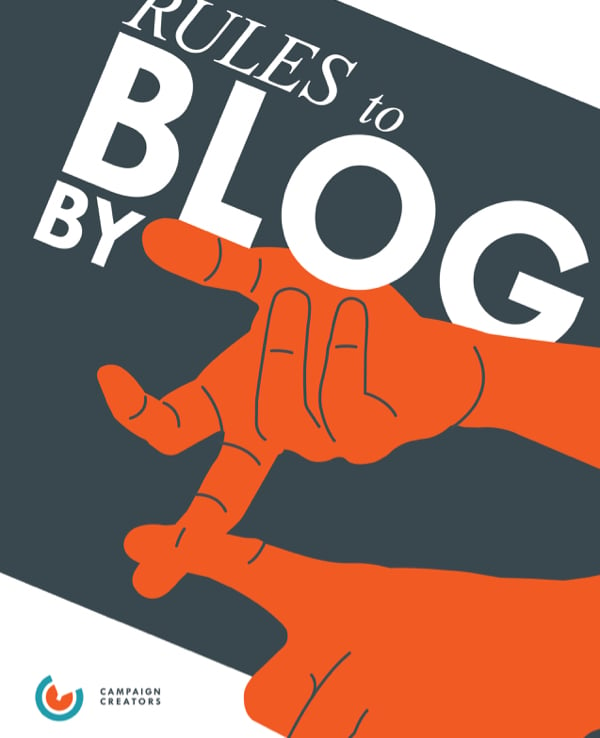
Rules to blog by
Gone are the days of cranking out tons of blogs with low-quality content. Download our Rules to Blog By Checklist today for an easy-to-follow list of blog best practices.
Download the checklistLead Generation Companies
It can be difficult to manage lead generation alone. Luckily, numerous companies offer lead generation services, which can boost your company's online presence and fill your funnel with quality leads. But not all providers are created equal, so it's important to be informed when seeking out lead generation services for your company.
Learn more about who these lead generation providers are, what services they offer, and most importantly, how they can provide real value to your company from the resources in this section.
Diagram: the Campaign Creators Difference
.jpg)
Definitions
Cost-per-lead (CPL): The amount it costs for you to acquire a new lead.
Cost per customer acquisition (CAC): The price you pay to acquire a new customer. Calculated by dividing all the costs spent on acquiring more customers by the number of customers acquired in the period the money was spent.
Return on Investment (ROI): A performance measure used to evaluate the efficiency and profitability of an investment, or to compare the efficiency and profitability of multiple investments. The formula for ROI is: (Gain from Investment minus Cost of Investment), all divided by (Cost of Investment).

How Lead Generation Services Can Grow Your Business
Is your business missing something? Struggling to find people who are interested in your brand? You are lacking in leads and are not sure how to gather more. We get it, it can be difficult to find leads, even if your brand is already established online.
Read blog
7 Questions You Should Ask Lead Generation Companies
For any successful business's marketing and sales strategy, strong lead generating capacity is the foundation that holds up the entire funnel.
Read blog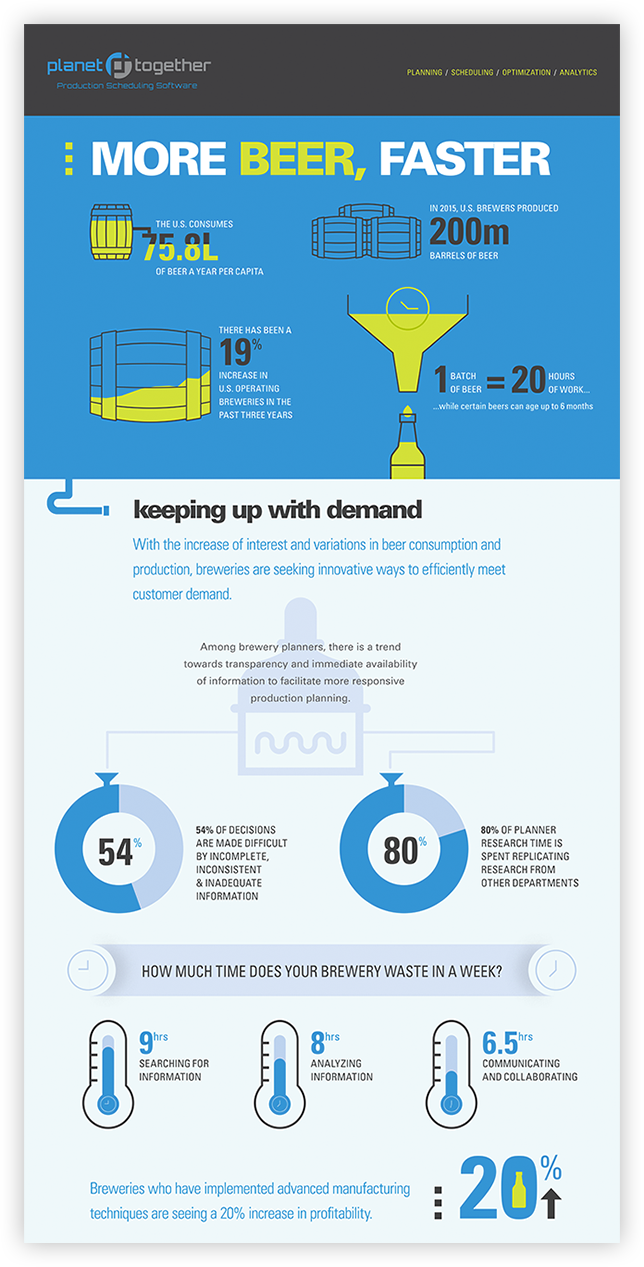
Impacting with Graphic Design: PlanetTogether Sees 3x More Leads
PlanetTogether is a SaaS (software as a service)-based company that provides advanced planning and scheduling software for manufacturers.
Read blog
Case Study: We Olive
We Olive needed an online marketing strategy that supported their growth.
See case studyB2b Lead Generation
Want to know the biggest challenge in B2B marketing? One word - leads. Without leads, there are no clients, no revenue, no nothing. Without leads, you’re done as a business.
Now we've all heard, “it's not B2B or B2C, it's human-to-human.” Sure, we all know its ultimately human to human, but there are some marketing strategies and tactics that work best in the context of B2B, where sales cycles are longer and multiple stakeholders are involved.
As a B2B company ourselves, we have the inside scoop on this area of lead generation and we're sharing our best resources on the subject in this section.
Diagram: Top B2b Lead Generation Channels
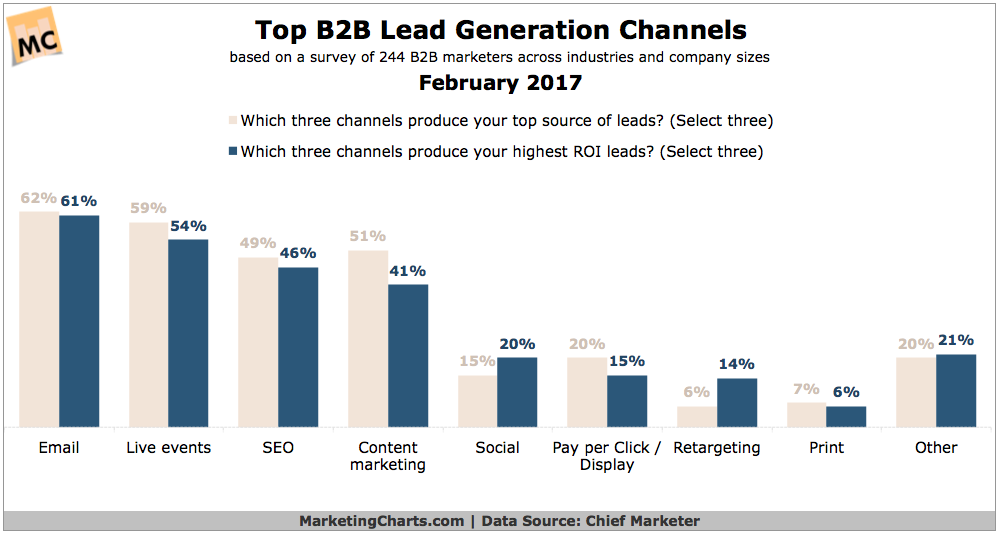
Definitions
Account-Based Marketing (ABM): A framework focused on targeting specific accounts or account segments, usually by purchase history, firmographics, product need, or strategic value. The objective of ABM is to add new accounts or increase revenue per existing account rather than focus on individual leads.
Advocate Marketing: The combination of customer service and marketing to have customers satisfied. A satisfied customer is rewarded for the advocacy they perform for the company.
BANT: Budget, Authority, Need, and Time. A method for qualifying both likely and desirable sales prospects, who should have the proper resources for your product/ service.
B2B: Business-to-business; the exchange of products, services or information between businesses.
Prospect: A person or account who shows interest in what you are selling. In most cases, they fits your target market and have the means to buy.
Small and Medium Sized Businesses (SMBs): Also called Small and Medium Sized Enterprises (SME’s), and refers to businesses with numbers between 1 and 999 employees. In general terms, a small business has less than 100 employees, while a medium business has between 100 and 999.
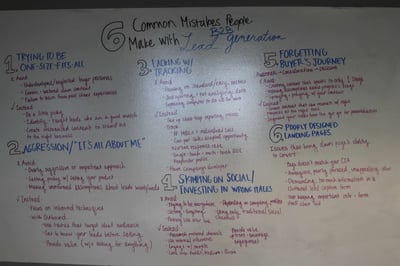
6 Common Mistakes People Make with B2B Lead Generation
In any marketing campaign, it is important to understand both sides of the coin- that is, both what to incorporate into your strategy and where all of the potential pitfalls lie.
Read blog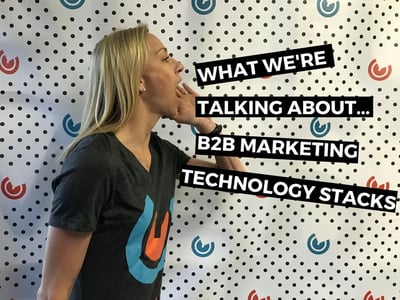
What We're Talking About... B2B Marketing Technology Stacks
Technology has become a huge part of everyone's lives, especially marketers, in the last decade.
Read blog
Your essential marketing metrics
Do you know which metrics actually matter to your boss? As marketers, we work tirelessly to move the needle on a laundry-list of metrics.
Download the infographic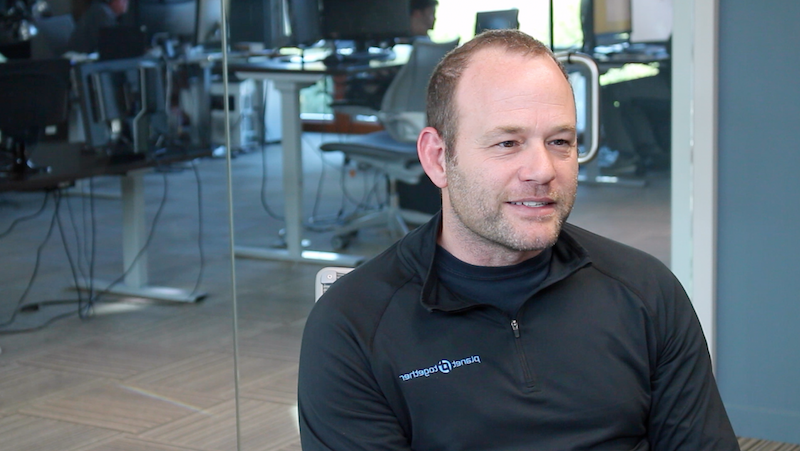
Case study: Planet Together
PlanetTogether struggled with low lead quality and a long sales cycle.
See case studyConversion Rate Optimization
As we mentioned, for most websites, only 2% of web traffic converts on the first visit. That's why today many websites are being designed with the goal to convert website visitors into leads. These conversions occur all over the website - on the homepage, pricing page, blog, and landing pages - and all of these can be optimized for a higher number of conversions. The process of optimizing those conversions is exactly what conversion rate optimization entails.
Once you are consistently attracting website visitors, its time to focus on conversion rate optimization. Discover how to boost your prospect-to-lead conversion rates with the resources in this section.
Diagram: the 6 Key Features of Conversion Rate Optimization
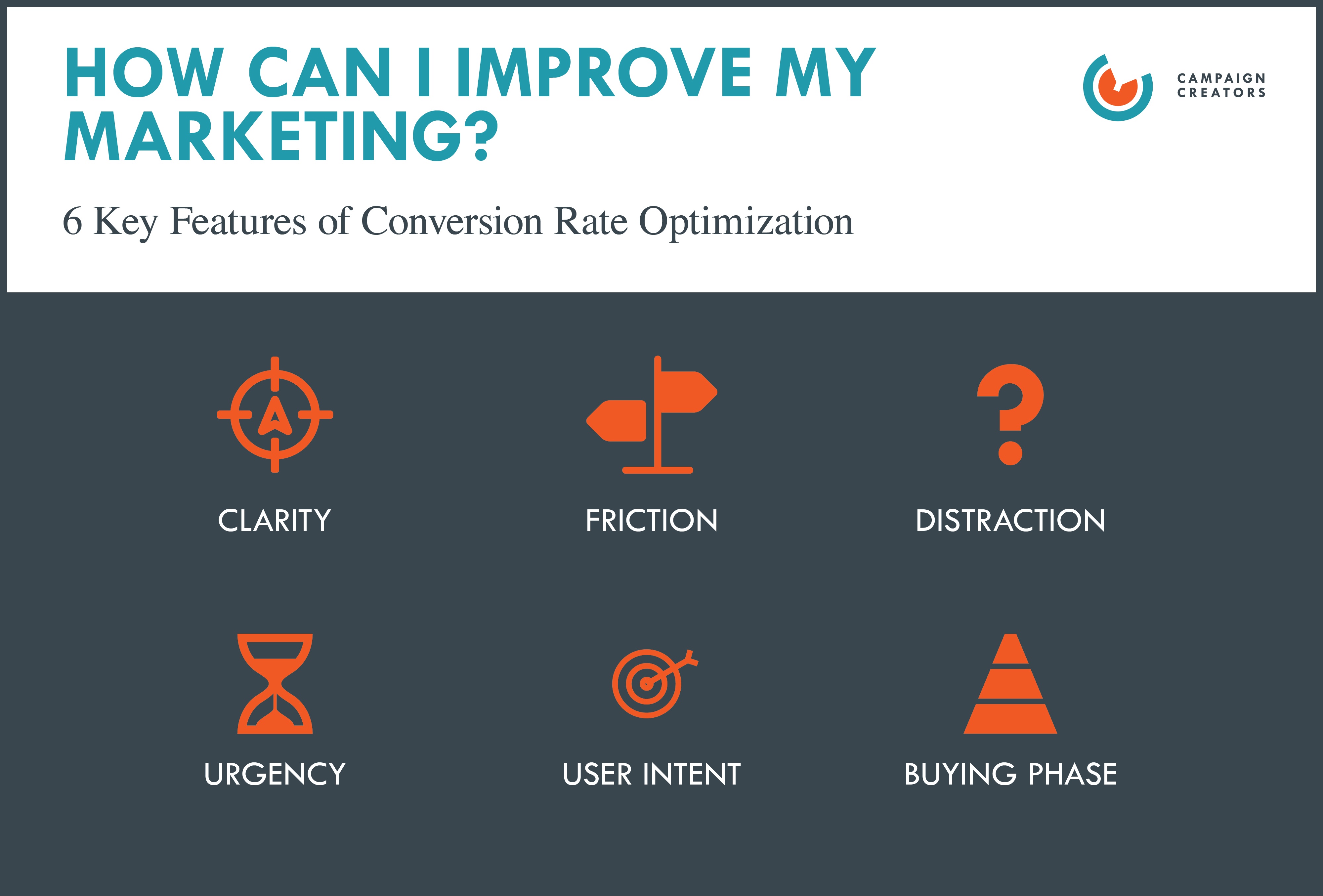
Definitions
A/B Testing: The process of comparing two variations of a single variable to determine which performs best in order to help improve marketing efforts. This is often done in email marketing (with variations in the subject line or copy), calls-to-action (variations in colors or verbiage), and landing pages (variations in content).
Analytics: The discovery and communication of meaningful patterns in data. In marketing, it’s looking at the data of one’s initiatives (website visitor reports, social, email, etc.), analyzing the trends, and developing actionable insights to make better informed decisions.
Click-through rate (CTR): A percentage of how many users click on a link included in a webpage or email, which provides a way of measuring the success of the campaigns.
Conversion Path: A conversion path is a series of website-based events that facilitate lead capture.
Conversion Rate: The percentage of people who have completed a specified action on a page, such as completing a Lead Capture Form.
Conversion Rate Optimization (CRO): The process of improving your site conversion using design techniques, key optimization principles, and testing. It involves creating an experience for your website visitors that will convert them into customers.
Friction: Any element of your website that is confusing, distracting, or causes stress for visitors, causing them to leave your page.
Mobile optimization: Designing and formatting your website so that it’s easy to read and navigate from a mobile device.
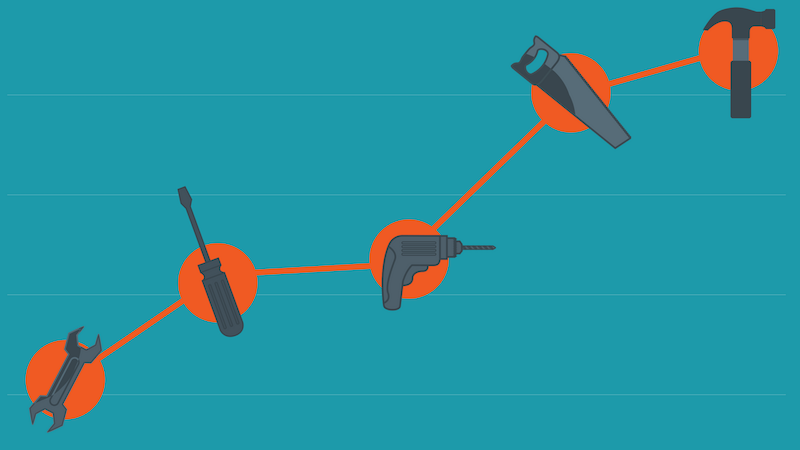
Best Conversion Rate Optimization Tools for Your Buck
Even if you have a fantastic conversion rate optimization strategy in your head, if you do not have the right tools and technology, that's where it will stay.
Read blog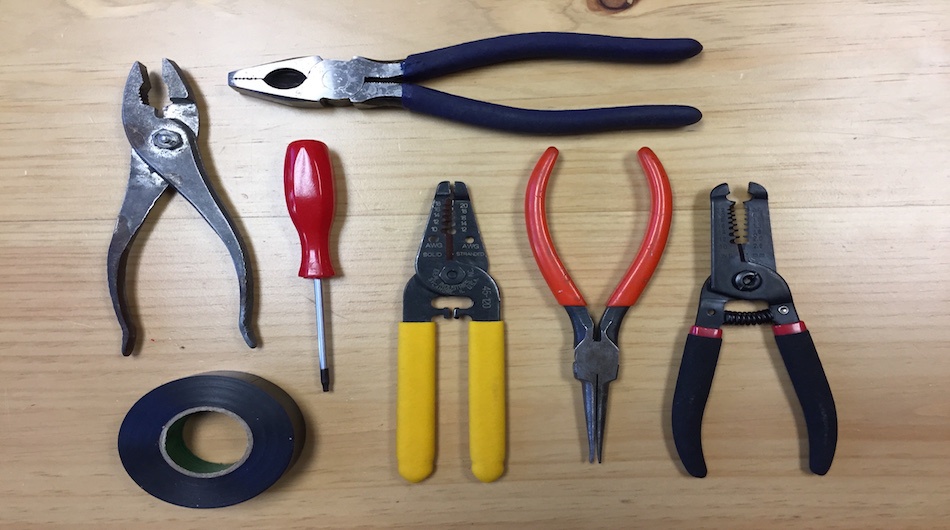
How to Increase Online Sales With Conversion Optimization Tools
By using conversion optimization tools you can boost your online sales. Here are our tips for what to place in your toolbox.
Read blog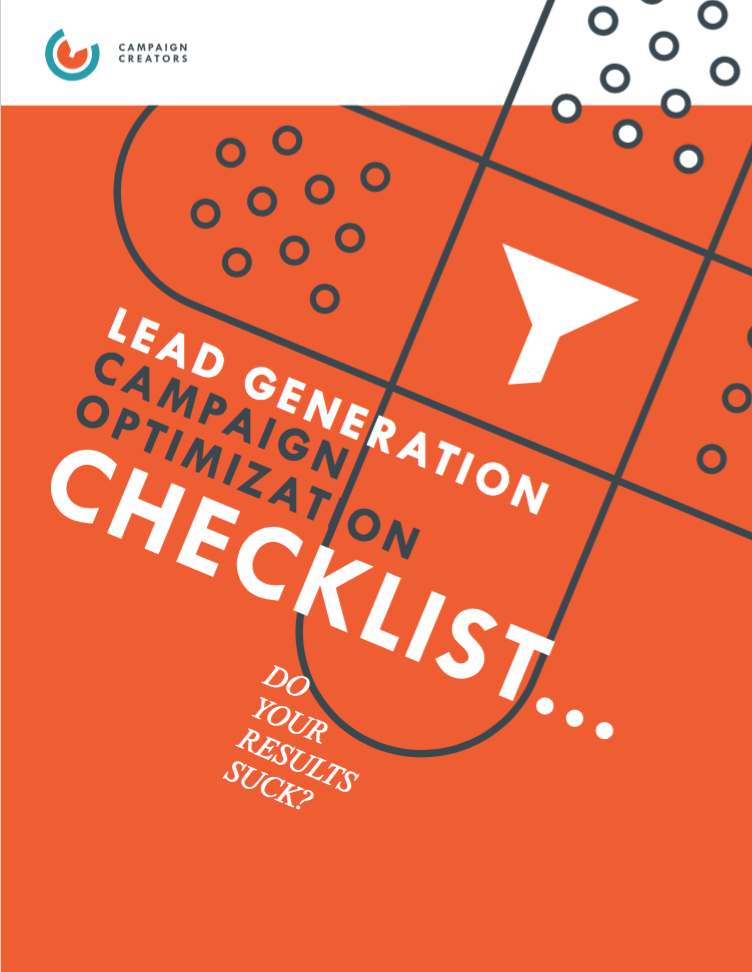
Lead Generation Campaign Optimization Checklist
Is your inbound marketing campaign failing to meet its goals? Think it could be performing better?
Download the checklist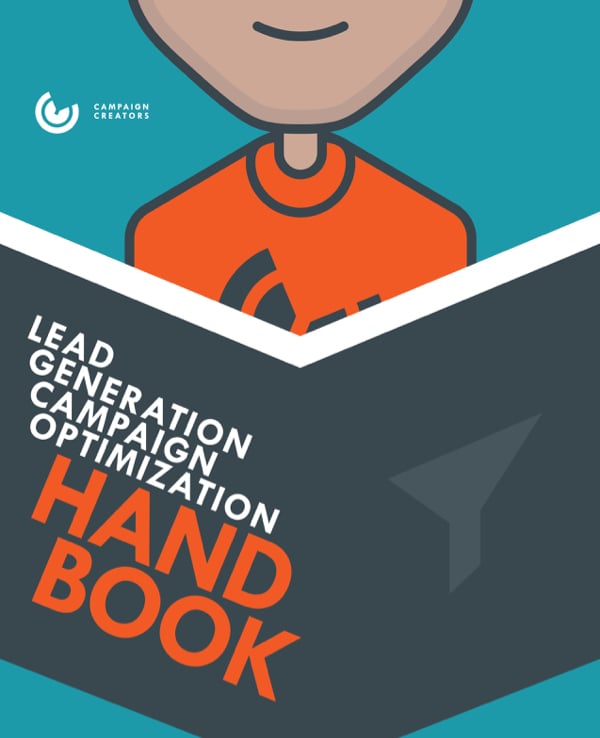
Lead Generation Campaign Optimization Checklist
So you’ve identified which piece or metric of your marketing campaign is underperforming, but how do you actually improve that element?
Get the handbook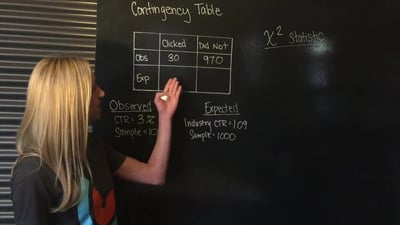
Are my conversion rates “good”?
Hey Campaign Creators, Tammy here, Market Research Analyst at Campaign Creators. Today, I want to help you answer the question, “Are my conversion rates good?”
Read blog